Flying Leathernecks Blu-ray Movie
HomeFlying Leathernecks Blu-ray Movie 
Warner Archive CollectionWarner Bros. | 1951 | 102 min | Not rated | Sep 15, 2020

Movie rating
6.8 | / 10 |
Blu-ray rating
| Users | 0.0 | |
| Reviewer | 3.5 | |
| Overall | 3.5 |
Overview
Flying Leathernecks (1951)
Taking place during the Battle of Guadalcanal, this story follows the struggles and conflict of a Marine Corps fighter squadron under the new leadership of Major Daniel Kirby, and his veteran (yet undisciplined) second in command, Capt. Carl 'Griff' Griffin.
Starring: John Wayne, Robert Ryan (I), Don Taylor (I), Janis Carter, Jay C. FlippenDirector: Nicholas Ray
| War | Uncertain |
| Drama | Uncertain |
| Adventure | Uncertain |
Specifications
Video
Video codec: MPEG-4 AVC
Video resolution: 1080p
Aspect ratio: 1.37:1
Original aspect ratio: 1.37:1
Audio
English: DTS-HD Master Audio 2.0 Mono (48kHz, 24-bit)
Subtitles
English SDH
Discs
Blu-ray Disc
Single disc (1 BD)
Playback
Region A (B, C untested)
Review
Rating summary
| Movie | 3.5 | |
| Video | 5.0 | |
| Audio | 4.5 | |
| Extras | 0.5 | |
| Overall | 3.5 |
Flying Leathernecks Blu-ray Movie Review
Reviewed by Dr. Stephen Larson December 22, 2021Hollywood movies about World War II and subsequent wars often distinguish between the philosophical differences between military figures in the chain of command. Flying Leathernecks offers a classic example in its first reel. Captain Carl “Grif” Griffin (Robert Ryan) is disappointed, as are his pilots, that he's been passed over for commanding officer in favor of Major Daniel Xavier Kirby (John Wayne). Kirby assumes command of the Wildcats, a US Marine Air Squadron who are nicknamed "Flying Leathernecks" for the thick neck pieces around their uniforms. The flying unit VMF-247 will battle the Japanese over Guadalcanal, Leyte, and parts of the Pacific. Grif and Kirby differ in the ways they deal with their squad. Kirby is a strict disciplinarian while Grif is looser and more easy-going with the pilots. They like Grif more because he's compassionate and understanding of their frailties compared to the tough-as-nails Kirby. While Kirby is hell bent in sending the flyers into harm's way, the war brings out a sensitive side in him when he struggles to compose a letter to the family of a dead pilot. The film also brings out his softer side when he returns stateside to visit his wife Joan (Janis Carter) and their son Tommy (Gordon Gebert).
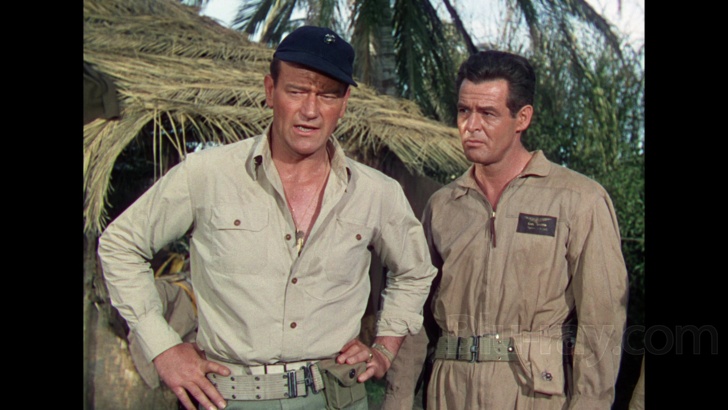
Flying Leathernecks was the sixth feature Nicholas Ray directed and considered an anomaly in the auteur's oeuvre because it stylistically and thematically doesn't resemble many of his other pictures. A good bulk of the movie is an aerial showcase for aviation enthusiast Howard Hughes, whose RKO Radio Pictures financed and distributed it. In his book, Nicholas Ray: The Glorious Failure of an American Director, Patrick McGilligan observed: "everything about that film had been subject to Howard Hughes’s whim." Along similar lines, Robert Ryan's biographer Franklin Jarlett commented that Ray essentially agreed to direct Flying Leathernecks as a favor to Hughes, "but he had little interest in putting much personal effort into the film, and it emerged minus his stylized genius." In his 1977 book Nicholas Ray, John Francis Kreidl opined that this first color film by Ray "is a completely incongruous one...Authorship critics who try to find Ray’s signature in this film will find the task difficult if not impossible." While I understand these commentators' points, Ray deserves at least some credit for the very professional production he presided over and put together. While the movie's jingoistic themes and anti-communist politics are much more aligned with those of Hughes and John Wayne, Ray inserts some rather harrowing shots of carnage that make its message less one-sided than it would seem.
Flying Leathernecks received very good press during its theatrical run. The Boston Globe's Marjory Adams deemed it "really effective adventure fare....as stirring a story as has been in town for a long time. It is the first time that 'close air support' tactics have been used in a film story." Hortense Morton, The San Francisco Examiner's film critic in 1951, led her review: "To the tune of a Marine Corps band, and with an audience heavily cast with civic, military and conference dignitaries, the Golden Gate Theater last night 'got into the act' with its premiere of Flying Leathernecks, Edmund Grainger's answer to every war picture made since Pearl Harbor." Morton closed her piece with this praise: "For aerial pageantry alone, the supporting cast, this is a great picture . . . a field day for camera addicts . . . something new has been added to Technicolor . . . artistic lensing of William E. Snyder."
Flying Leathernecks Blu-ray Movie, Video Quality 
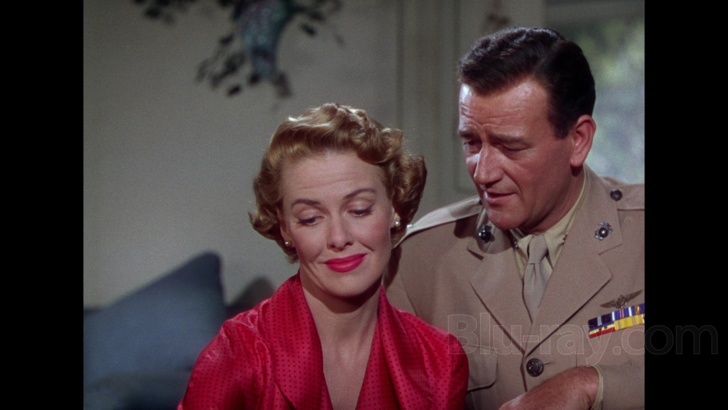
The Warner Archive Collection's Blu-ray of Flying Leathernecks presents a 4K restoration of the film's 3-strip Technicolor that looks practically flawless. From the opening on the island of Oahu (Screenshot #16), the image looks very clear and sharp with finely delineated hues. I only spotted one shot of some debris over the image. The scene depicted in #17 looks out of place with rest of the film because the viewer can clearly detect the painted backdrop. The film was shot at Camp Pendleton and the El Toro Marine Base in California, which stand in for the Solomon Islands. Along with the studio footage, producer Edmund Grainger and editor Sherman Todd intercut 16mm archive montage of sea take-offs, landings, and aerial fights courtesy of the US Navy (see frame grabs 18-20). The shot taken inside the cockpit is noticeably softer than the studio shots. The shot of the vessel boasts a thick grain. Footage of hand-to-hand combat is less grainy but sports greater and cleaner color saturation. According to a 1951 Variety, the stock color footage is of the real Pacific from years earlier.
Flying Leathernecks appears in the aspect ratio of 1.37:1, which seems to be the format it was shown in cinemas. Ray author John Kreidl says that he rented a 16mm print of Flying Leathernecks (from a company called MacMillan) that has it in the 1.66:1 ratio. I don't know of any other extant prints or video presentations that display it in that ratio, however. Warner's MPEG-4 AVC-encoded BD-50 carries a mean video bitrate of 34995 kbps.
Warner provides a whopping forty scene selections for the 102-minute feature.
Flying Leathernecks Blu-ray Movie, Audio Quality 
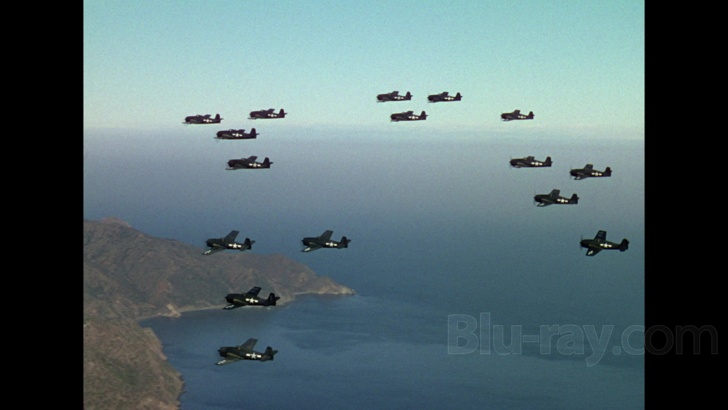
Warner supplies a DTS-HD Master Audio Dual Mono (1883 kbps, 24-bit). The monaural mix is clean and pretty crisp throughout. I didn't have any issues understanding the dialogue. The aerial strafing and bombings almost produced a stereophonic effect. Sound f/x had excellent range for a 1951 recording. Composer Roy Webb adapts portions of the Marine Hymn and uses it in variations for his rousing and patriotic score.
Warner provides optional English SDH.
Flying Leathernecks Blu-ray Movie, Special Features and Extras 
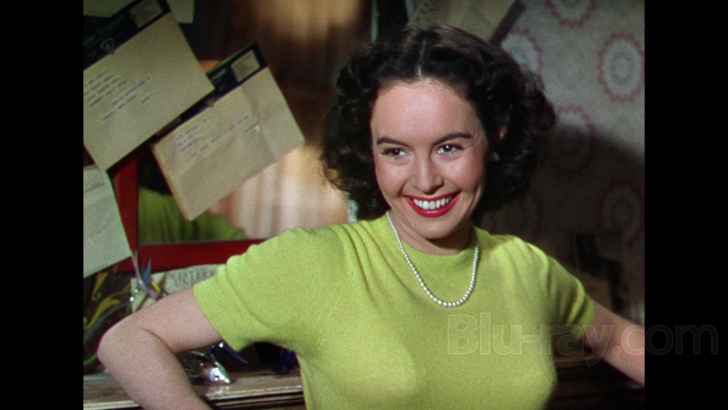
- Reissue Trailer (1:50, upconverted to 1080p) - RKO's re-release trailer for The Flying Leathernecks. The image hasn't been restored. The narrator misleadingly proclaims that "it will rank with screen's great love stories."
Flying Leathernecks Blu-ray Movie, Overall Score and Recommendation 
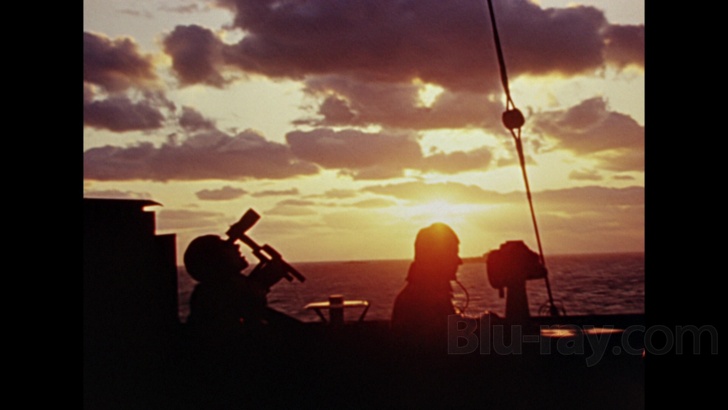
Flying Leathernecks is a solid WWII film with exciting air fights to go with a compelling battle of wills between John Wayne and Robert Ryan's commanders. Wayne delivers his usual sturdy, workmanlike performance while Ryan's take is the more nuanced of the two. The movie can be interpreted as a propaganda piece for American intervention in Korea. This probably went against Nicholas Ray's aim as the director attempted to show some of the costs of war (or as much as Howard Hughes would allow him to). Warner's image and sound presentations are nearly immaculate. RECOMMENDED to fans of Wayne and Ryan.
Similar titles
Similar titles you might also like

The Bridges at Toko-Ri
1954

A Walk in the Sun
1945

Never So Few
1959

The Bridge at Remagen
1969

The Young Lions
Limited Edition to 3000 - SOLD OUT
1958

They Were Expendable
Warner Archive Collection
1945

Too Late the Hero
1970

The Cruel Sea
1953

Pork Chop Hill
1959

Retreat, Hell!
1952

The Green Berets
1968

Merrill's Marauders
Warner Archive Collection
1962

Hell Is for Heroes
1962

Attack!
Fragile Fox
1956

Run Silent, Run Deep
Special Edition
1958

Go Tell the Spartans
1978

The Dirty Dozen
1967

The Enemy Below
1957

Objective, Burma!
Warner Archive Collection
1945

Twelve O'Clock High
1949